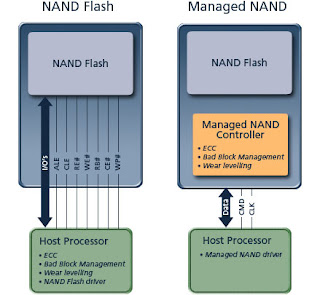http://itsmyhr.com/about-me/
Sunday, June 24, 2012
Thursday, June 14, 2012
M.Sc Software Engineering, PSG College of Technology

MSc Software Engineering at PSG College of Technology, is a
unique course which focuses on specializing the software engineering skills by
giving students the industrial exposure by two 6 months internships and with
its strong alumni feedback and support the department brings in the latest
cutting-edge technologies as the part of the curriculum. The department
builds students' coding skills by encouraging them with many coding projects at
the end of every semester. Students get back to college after the first
internship at renowned organizations with lots of exposure gained that help
them understand the concepts in a new perception. The department also gives
chance to meet the alumni twice a year which helps students to do their
semester projects on the latest technologies that runs the industry.
Labels:
M.Sc SWE,
msc software engineering,
PSG,
psg tech,
software engg
Wednesday, June 13, 2012
e-MMC (Embedded MultiMedia Card)
eMMC describes an architecture consisting of an embedded storage
solution with MMC interface, flash memory and controller.In one line it
is a flash/nand over MMC interface. Typically, flash memory is controlled by a dedicated controller that
supervises data reads and writes, and operates under the control of the
application's CPU.
eMMC is a standard for embedded memory devices that contain not only a data storage element (such as NAND flash memory), but also a controller for the storage element integrated on the same silicon die. This results in several advantages, such as reduced development time and easier integration of the memory block in the overall system. Ultimately, this leads to a much shorter time-to-market for the end product.
e·MMC embedded memory essentially transforms a program/erase/read device like NAND Flash into a simple write/read memory. This managed interface addresses potential NAND design concerns internally, using error correction code (ECC), wear leveling, and bad block management technology. Handling errors internally takes the burden off the host controller and increases speed, providing higher system performance.Managed NANDs are RAW NANDs combined with a memory controller and can support popular interfaces such as MMC (eMMC, moviNAND), SD (eSD) and SPI. The memory controller hides the details of the NAND and provides the intended interface and ECC support. This means that a eMMC/eSD NAND can talk to a embedded TI device through MMC/SD controller.
Composition of an e-MMC System
An e-MMC system generally consists of a host controller, an e-MMC device, and a HS-MMC driver, which is software that controls the e-MMC (see below).
eMMC is a standard for embedded memory devices that contain not only a data storage element (such as NAND flash memory), but also a controller for the storage element integrated on the same silicon die. This results in several advantages, such as reduced development time and easier integration of the memory block in the overall system. Ultimately, this leads to a much shorter time-to-market for the end product.
e·MMC embedded memory essentially transforms a program/erase/read device like NAND Flash into a simple write/read memory. This managed interface addresses potential NAND design concerns internally, using error correction code (ECC), wear leveling, and bad block management technology. Handling errors internally takes the burden off the host controller and increases speed, providing higher system performance.Managed NANDs are RAW NANDs combined with a memory controller and can support popular interfaces such as MMC (eMMC, moviNAND), SD (eSD) and SPI. The memory controller hides the details of the NAND and provides the intended interface and ECC support. This means that a eMMC/eSD NAND can talk to a embedded TI device through MMC/SD controller.
Composition of an e-MMC System
An e-MMC system generally consists of a host controller, an e-MMC device, and a HS-MMC driver, which is software that controls the e-MMC (see below).
- The host controller has a host CPU and a HS-MMC interface. The e-MMC also has a HS-MMC interface.
- The e-MMC consists of raw MLC NAND flash memory and a controller. The controller has a HS-MMC interface which can be connected to the host controller. It also has a NAND interface which is connected to the raw MLC NAND flash memory. It has several functions such as bad block management, wear leveling and error correction code (ECC), to utilize the raw MLC NAND flash memory efficiently.
- The HS-MMC driver handles operations between the host controller and the e-MMC.
Labels:
e MMC,
e-mmc,
e.mmc,
embedded MMC,
embedded MultimediaMedia card,
emmc,
waht is emmc
Sunday, June 10, 2012
Subscribe to:
Posts (Atom)


